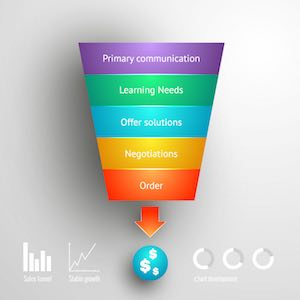Getting Started with Conversion Tracking
 Conversion tracking allows business owners and digital marketers to better understand how their site is performing. Without this, you’re left with looking only at KPIs like sessions, device use and geographic locations. A site that has conversion tracking gives you much more information to not only how your visitors are becoming real customers, but also see the path they took to becoming a sale.
Conversion tracking allows business owners and digital marketers to better understand how their site is performing. Without this, you’re left with looking only at KPIs like sessions, device use and geographic locations. A site that has conversion tracking gives you much more information to not only how your visitors are becoming real customers, but also see the path they took to becoming a sale.
The important question to ask now is: what can you reasonably track using the Google Analytics platform? The short, and misleadingly, simple answer is everything! The misleading part of this statement is that a majority of the consumer interaction that companies will want to track requires development skills, then can sometimes require some critical thinking just to understand the results.
Here are some beginning simple types that you can easily implement in your Google Analytics profile to start getting a better idea of how your site is doing regarding real results (leads) as opposed to fluff traffic.
Destination Goals
As the name implies, Destination Goals mark users going to a specified URL or page as a Conversion in your reports. This can be particularly useful if you’re promoting a particular product through email or social media campaigns. Knowing how often users are hitting that dedicated page can show you how far your reach is, and if that page is engaging with your audience.
Destination goals are also often used to track contact form submissions. The trick is that you don’t track the URL that the contact form is on, you track the Thank You page. (If you are using a contact form that doesn’t go to a Thank You page on a successful submit, then you’ll need to use a more advanced form of tracking.)
The information you get from Destination Goals can be readily found in the Behavior > Site Content section of Google Analytics. However, creating these means an easier time relating other performance indicators to direct results. For example, you may find that your Organic traffic is more inclined to visit the Contact page than your Social traffic. This could indicate that your social media posts aren’t yet targeting the right kind of audience. Being able to see this correlation in one easy place can mean a world of difference when trying to determine what turns a visitor into a customer.
Destination goals also get much more rewarding when you add the use of Funnels. This feature in Google Analytics allows tracking a specific path that users make. For example, the best way to track that Thank You page mentioned above, would be to add a funnel step where the user had to start on the Contact page first. This of course gets more complicated if you have a contact form on every page, so this is another case where more advanced form of tracking would be required.
If you don’t use the Funnel feature and track only hits to the Thank You page, keep in mind that anyone going to that URL would be counted (possibly bots).
Pages/Session Goals
Pages per sessions are a user engagement metric that is consistently looked at when trying to gauge the success of a website. Many studies have shown that the more pages a user interacts with, the more likely they are to convert into a customer.
So what does this mean for creating a goal? That answer depends on the purpose of your website. Websites that are focused on educating consumers are more likely to find this particular goal type useful. If your website is dedicated to informing your audience and is not related to any direct revenue strategy (i.e. website is funded by ads or the website is dedicated to PR for a brand), success is most likely showing that consumers are reading the content on your site.
For sites focused on products and services, this may not be a meaningful goal.
Time Spent on Site
This particular goal is similar to Pages per Session in that it provides great conversion information for sites looking to educate and inform consumers.
However, this particular Goal being set up can be great at letting you understand either particular questions consumers have, or places to expand your content. For example, if users are spending a large amount of time on your site jumping from page to page, that could indicate that while they are clearly engaged, they’re not finding the information they want readily enough.
Conversion tracking is important to understanding the real return on investment of your site so be sure to think about what actions users would take to become a customer. These are the types of interactions that you’ll want to track as Goals.
In the next post, we’ll discuss using Google Tag Manager for those more complicated contact forms and user interactions.



